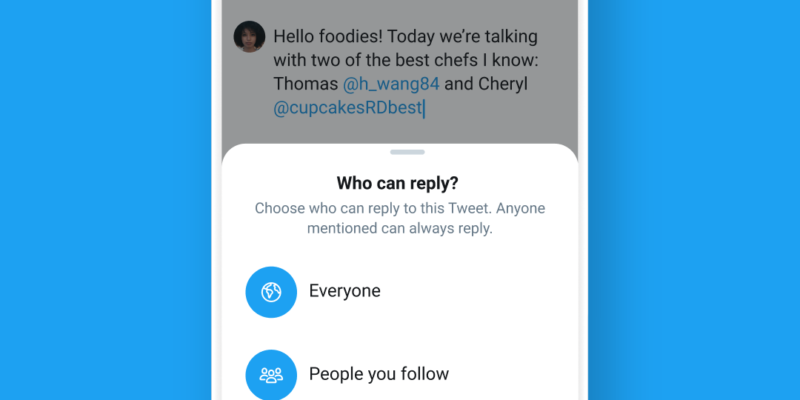The takeaways
- Twitter’s Fleets, their version of Instagram’s Stories, is testing a unique collaborative model bringing two users’ audiences together through co-created content.
- Of particular interest is its potential compatibility with another test allowing users to control who responds to their tweets.
- The company is testing a range of new features across the world that point to more interactivity between users and their audiences.
What happened?
Twitter is testing a new collaborative version of its Instagram Stories analogue, Fleets, merging user contributions into a single stream. The new function enables two users to team up and let their followers view their collaborative Fleet. Like Stories, Fleets lets users create content that lasts for 24 hours and is only accessible on their profiles. The testing has begun with users in Brazil.
Other details are currently scarce, but Twitter is unique in offering collaborative Stories, which could further evolve the Stories trend. Fleets is currently available in Italy, India and South Korea.
What’s in store for tweeting?
What makes this development worth tracking is that Twitter is actively exploring ways to evolve discussion on its platform. Another test encouraging readers to read articles before sharing them is a direct challenge to clickbait. Other recently confirmed tests include voice tweets, emoji reactions and controls over who responds to tweets.
As Social Media Today speculates, the latter could better facilitate Q and A sessions, for example, allowing users to pre-approve participants and streamline conversations. Its interface also recalls Facebook and Instagram’s settings for sharing targeted content to selected recipients. This is in line with Twitter looking to its rivals for both inspiration and proven methods.
Twitter promotes their new features as addressing a core problem – that “unwanted replies make it hard to have meaningful conversations.” This may or may not tie into Twitter’s status in the ongoing freedom of speech/content moderation debate, but could enable content publishers to focus their efforts in a key area – audience engagement.









